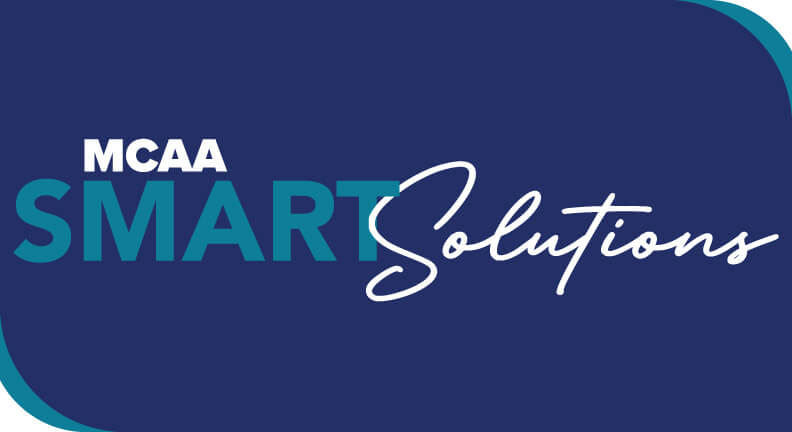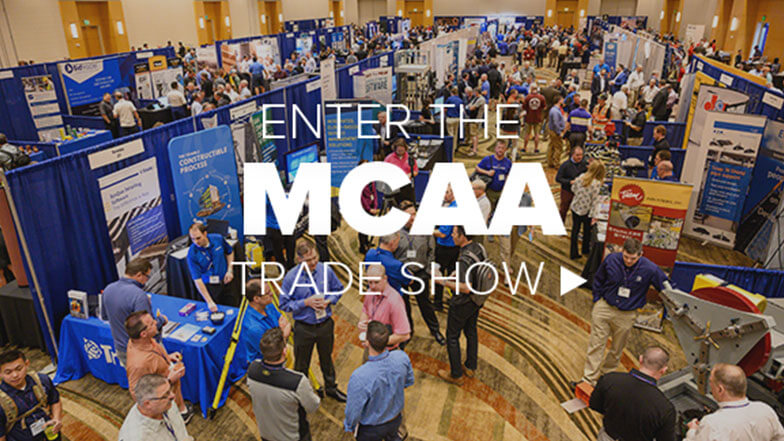The Safer Federal Workforce (SFW) Task Force, established by President Biden in Executive Order 13991 (January 20, 2021), issued COVID-19 Safety Guidance on September 24, 2021, in furtherance of the Federal prime contractor and subcontractor vaccination mandate issued by the President in Executive Order (EO) 14042 on September 9, 2021.
That EO also was accompanied by a Presidential order directing OSHA to create a similar (but not identical) vaccination and testing regime in an OSHA Emergency Temporary Standard that would cover all employers (irrespective of Federal contract status) with over 100 employees. And these parallel executive mandates operate in conjunction too with respect to COVID vaccination, testing and social distancing and masking rules that pertain to Federal agency personnel worksites, where covered private sector employers may be working.
Below is a digest of the SFW Task Force Guidance pertaining to direct Federal agency prime contractors and subcontractors (irrespective of employee numbers) at all lower tiers on covered Federal contracts.
Contract Coverage
The Task Force Guidance requires COVID-19 vaccination of all Federal prime contractor and subcontractor personnel working on or in relation to direct Federal contracts with Federal agencies above the current Federal Simplified Acquisition Threshold of $250,000. It applies to contracts entered into on solicitations issued on or after October 14, 2021, and to contract extensions or options exercised on existing covered contracts issued on or after that date.
Regulatory Procedure
Coincident with release of the SFW Task Force Guidance, the OMB exercised its ratification of the regulatory purpose called for in EO 14042.
In a release dated September 24, 2021, Office of Management and Budget (OMB) Deputy Director for Management, Jason Miller, declared: “Pursuant to the order [EO14042], the Director of the Office of Management and Budget has determined that compliance by Federal contractors and subcontractors with the COVID-19 workplace safety protocols detailed in the Task Force’s Guidance will promote economy and efficiency in Federal contracting. These safeguards will decrease worker absence, reduce labor costs, and improve the efficiency of contractors and subcontractors performing work for the Federal government.”
The Guidance is now subject to regulatory action by the Federal Acquisition Regulatory (FAR) Council, which has until October 8, 2021, to issue FAR contract language implementing the Guidance, which is to be included in FAR contract solicitation and contract extensions and option renewals beginning on October 14, 2021. The requirements will apply to new contracts awarded on or after November 14, 2021. Covered employers and employees will have until no later than December 8, 2021, to become “fully vaccinated.” After December 8th, all covered employees must be fully vaccinated on the first day of performance of a covered new contract, or extension or option on an existing covered contract. (As of this date, “fully vaccinated” means initial approved one- or two-shot regime – currently, booster shots are not included.)
Specific Requirements
The Guidance requires the following three primary elements:
- Full vaccination of all covered employees. Exception noted only for narrowly defined legal accommodations. The Guidance says a covered contractor may be required [emphasis added] to provide an accommodation if the employee claims a medical/disability bar to vaccination or expressed opposition to vaccination based on a sincerely held religious belief. The type of accommodation is not spelled out. Testing is not specifically mentioned.
- Masking and social distancing – The Guidance sets out specific masking and social distancing as applied to covered workplaces.
- Appointment of specific compliance personnel – The Guidance requires covered employers to appoint specific compliance personnel to implement the requirements.
Employee Coverage
The Guidance covers both full and part time employees working on or in relation to covered contracts – in construction that would be the job site and off-site home office personnel. The vaccination requirement also applies to employees working at home who are employed to work on or in relation to the covered contract – masking and social distancing would not bear on that home work location.
The Guidance does not address the question of payment for the vaccine, or any time off for adverse physical reaction to the vaccination. The Guidance does not offer regular weekly testing as an explicit alternative to testing or as an accommodation for valid exceptions. Neither does the Guidance address paid time off for testing, if that is allowed as an acceptable accommodation, or payment for that testing.
Some or all of these issues are present in the OSHA ETS development. MCAA has taken the position that paid time off for testing, if and when it may be allowed in lieu of vaccination, is entirely counterproductive to the goal of maximizing vaccination of the entire workforce. Both paid time off for testing, and employer pay for testing, is a disincentive to widespread vaccination acceptance – which is the goal of the recent Executive actions, and fully in line with the UA/MCAA Message on vaccination.
Specifics on Vaccines
The Guidance requires covered employees to be “fully vaccinated” by the effective date of performance. “Fully vaccinated” is defined as two weeks after a one- or two-shot course of a currently approved vaccine under US Food and Drug Administration (FDA) or World Health Organization approvals – set out as: Pfizer-BioNTech, Moderna, Johnson & Johnson/Jansen, AstraZeneca/Oxford, and one trial vaccine candidate – Novavax COVID-19.
The vaccination rules apply to outdoor work. Prior COVID infection or proof of COVID antibodies is not a permissible exception. Worker attestation of vaccination is not acceptable documentation. Documentation of vaccination is to be presented in provider vaccination cards or vaccination records from health department records.
Other Potential Issues and Clarifications
The Frequently Asked Questions (FAQ) section of the Guidance raises some key complicating issues and the need for ongoing regulatory clarification.
For example, Question 16 of the Guidance Frequently Asked Questions (p. 12 of the Guidance, asks: If the Safer Federal Workforce Task Force updates the Guidance to add new requirements, do those requirements apply to existing contracts? A. Yes. Covered contractors are required to, for the duration of the contract, comply with all Task Force Guidance for contractor of subcontractor workplace locations, including any new Guidance where the OMB Director approves the Guidance and determines that adherence to the Guidance will promote economy and efficiency in Federal contracting. The Task Force and OMB plans to ensure any workplace safety protocols reflect what is necessary to decrease the spread of COVID-19.”
This element of the Guidance raises the current question of whether and how the Government agency should equitably compensate contractors for COVID impact costs, imposed either before or after contract award. MCAA has been advocating for a COVID impact cost equitable adjustment mandate from OMB to Contracting Officers on existing contracts entered into pre-COVID and performed post- COVID. MCAA also is pressing for a FAR COVID cost escalation adjustment contingency clause in all contracts going forward to avoid across-the-board bid contingencies anticipating just such post-award added COVID compliance mandates on Federal contract and subcontract work performance.
These issues too are raised in Question 20 – Can a covered contractor comply with the workplace safety requirements from the Occupational Safety and Health Administration, including pursuant to any forthcoming Emergency Temporary Standard related to COVID-19, instead of the requirements of the guidance? A. No. Covered contractors must comply with the requirements set forth in this Guidance regardless of whether they are subject to other workplace safety standards.
This answer sets up the same issues with regard to paid time off for testing. If the OSHA ETS permits testing in lieu of vaccination (the Task Guidance does not permit testing in lieu of vaccination) – and then should go on to require that OSHA ETS covered employers (100+ employees) must pay for the testing and time off for testing, then the question is would that cost be recoverable under the FAR COVID cost contingency clause (if there is one in the FAR contract) since it’s required by OSHA – not the Federal Contract Guidance directly. Ideally, the Federal contracting COVID cost recovery equitable adjustment measure MCAA is pressing for should – in the extension of the equitable recovery – permit recovery of the OSHA ETS costs incurred by covered Federal prime contractors and subcontractors.
Note: The Guidance encourages agencies to apply the requirements to contracts for products (currently not covered) and to otherwise covered contract actions below the $250,000 threshold. It should be noted that the Guidance applies to all covered firms irrespective of employment levels; the OSHA ETS has a 100 plus employee threshold. Regular testing in lieu of vaccination is not an option under the Guidance, but it is under the OSHA ETS executive action. Who pays for that testing and time to take the tests remain to be determined in the OSHA rulemaking. Certainly, paid time off for testing in lieu of vaccination would not be in line with the regulatory rationale under the Federal Property and Administrative Services Act underlying the Guidance – promoting economy and efficiency of Federal contract performance.
Enforcement
The enforcement regime for the COVID-19 vaccination mandate on Federal contracts is the same as it is for any other FAR mandate and flow-down clause. In the first instance the Contracting Officer has oversight of the prime contractor performance, and the flow-down to subs and sub-subs is left to the lower tier parties. This is stated in the Guidance FAQ as follows:
“Q. What is the prime contractor’s responsibility for verifying subcontractors are complying with the mandate? A. The prime contractor is responsible for ensuring that the required clause is incorporated into its first-tier subcontracts in accordance with the implementation schedule set forth in Section 6 of the order [EO 14042 is the Effective Date schedule]. When the clause is incorporated into a subcontract, a subcontractor is required to comply with this Guidance and the workplace protocols detailed herein. Additionally, first-tier subcontractors are expected to flow the clause down to their lower-tier subcontractors in a similar fashion so that accountability for compliance is fully established throughout the Federal contract supply chain for covered subcontractor employees and workplaces at all tiers through application of the clause.”
Note: The Guidance does not require flow-down to material supply (products) providers on covered contracts. There is some speculation that the FAR regulations might do that. Also, further specificity on some of these issues might come out in the FAR regulations due October 8.
Below are links to the SFW Task Force Guidance (including the Frequently Asked Question elaboration) and related OMB announcement of ratification.
MCAA will continue to track and report regulatory developments on these issues affecting MCAA member forms as developments warrant.
MCAA will be presenting a webinar on these issues shortly after the FAR regulations are released. Watch MCAA.org for an announcement.


